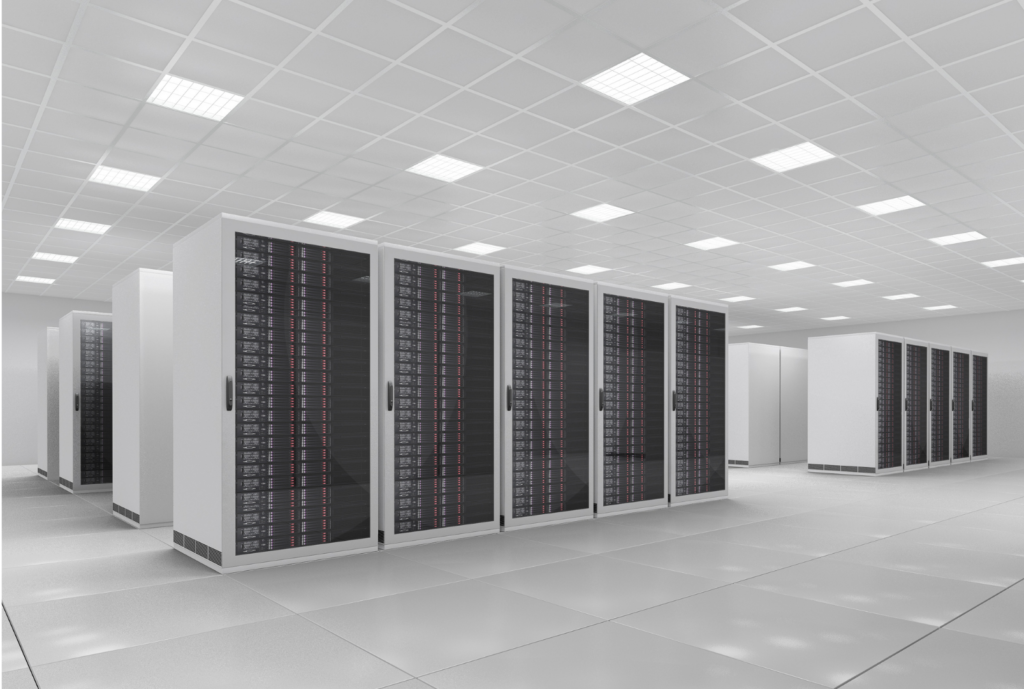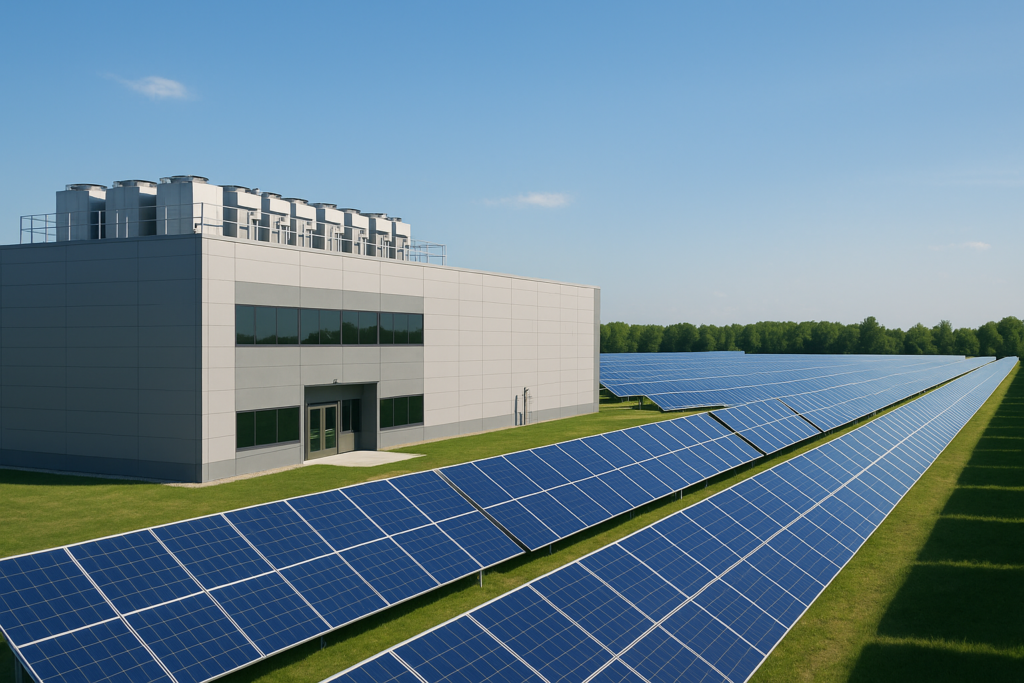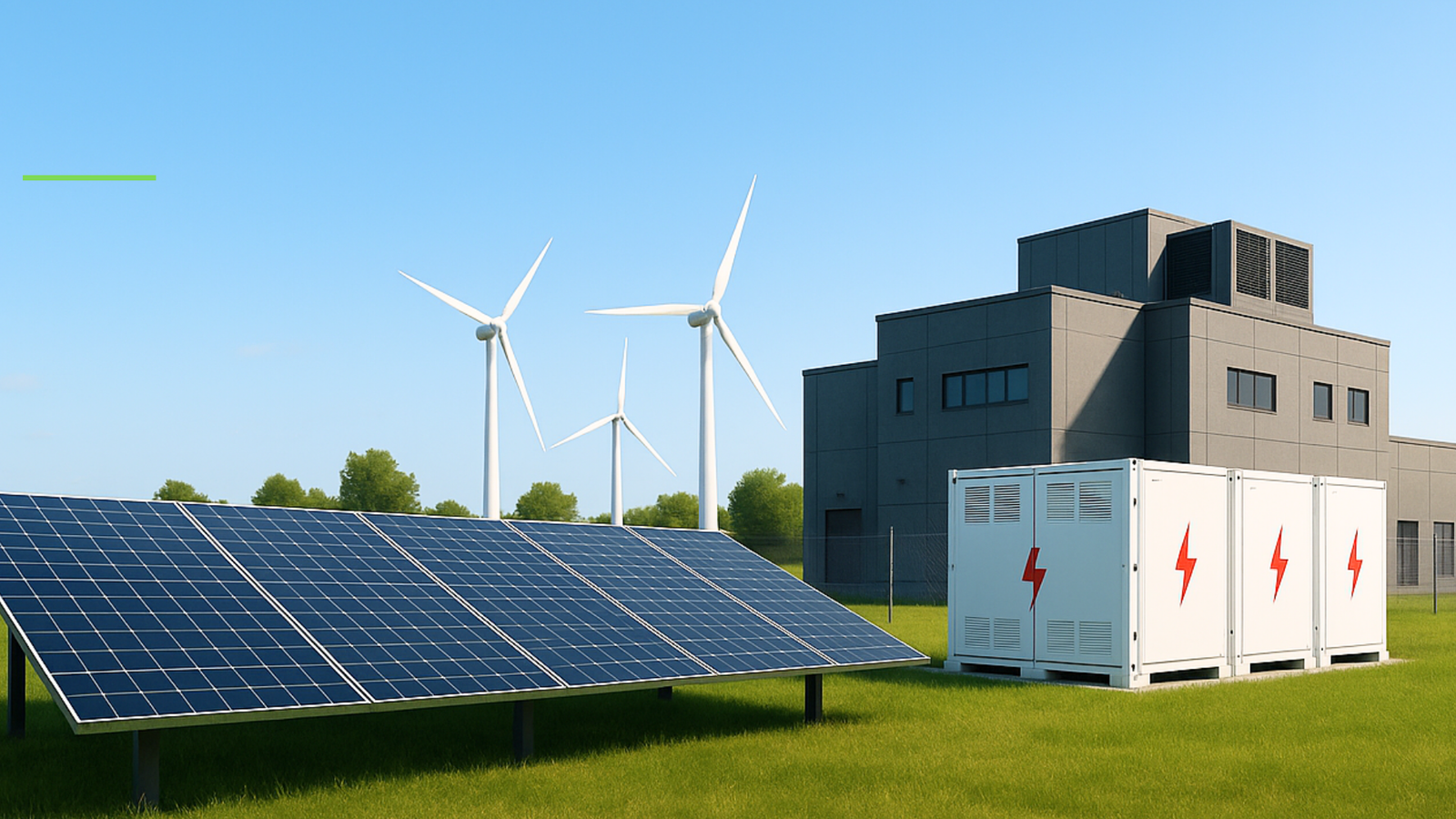Powering India’s Data Centres: The Green Backbone of the Digital Economy
India’s Digital Growth Meets Energy Reality
India’s digital economy is undergoing a transformation at an unprecedented scale. Fuelled by artificial intelligence (AI), cloud computing, digital payments, and a ballooning user base, the country is becoming a global digital powerhouse. At the centre of this revolution lies a less visible but critical enabler—data centres.
According to ICRA (2024), India’s data centre (DC) operational capacity is projected to expand from 1,150 MW in December 2024 to 2,000–2,100 MW by March 2027, with total investments expected to exceed $20–25 billion. Global tech giants like Amazon Web Services (AWS), Google, Microsoft Azure, and Indian majors like AdaniConneX, Yotta Infrastructure, and Nxtra by Bharti Airtel are racing to scale infrastructure.
But this growth has a growing side-effect: energy consumption. Data centres run 24/7, consuming electricity for computing, storage, cooling, and uninterrupted power supply. Nomura estimates they currently consume around 0.5% of India’s electricity, and this could surge to 3% by 2030.
The driver behind this surge? AI. Large Language Models are computation-heavy and consume significantly more power per query than conventional services. Their widespread adoption across sectors—from healthcare to finance—will push electricity demand from data centres to new heights.
The question is no longer whether India will digitize—but whether it can do so without burning out the planet.
The Growing Energy Footprint of Data Centres
A data centre is akin to a digital factory—one that never shuts down. Thousands of servers are constantly operational, managing terabytes of data, and generating heat. Cooling systems—whether air-based, water-cooled, or increasingly, immersion-based—run non-stop. Power backup systems remain on standby at all times.
Globally, data centres already consume 1–1.5% of total electricity, according to the International Energy Agency. In India, although current consumption is under 1%, it is accelerating rapidly. AI-related power demand alone is projected to grow at over 30% CAGR in the next five years.
This growth isn’t just about how much energy is needed, but what kind. Data centres require clean, stable, high-quality power. Even small fluctuations or outages can lead to catastrophic failures or downtime. Unfortunately, India’s grid continues to suffer from voltage variations, unplanned outages, and high losses in many states.
Simply put, data centres are critical—but they cannot grow in a vacuum. Their energy needs must be reimagined within the boundaries of sustainability.
India’s Renewable Advantage: A Bright Path Forward
Fortunately, India is not starting from scratch. It is already the fourth-largest renewable energy market globally, with over 220 GW of installed RE capacity as of June 2025 (MNRE, 2025). Even more impressively, India has already met its target of 50% installed capacity from non-fossil sources, five years ahead of its Nationally Determined Contributions (NDCs).
The country’s geography offers significant renewable strengths:
- High solar irradiance across most of India
- Strong wind corridors in states like Gujarat, Rajasthan, Tamil Nadu, and Karnataka
This creates a massive opportunity for data centres to move away from fossil-based grid electricity and towards Round-the-Clock (RTC) renewable power using:
- Open Access Procurement
- Group Captive/Third-Party PPAs
- Battery Energy Storage Systems (BESS)
- Green Energy Supply Agreements (GESA)
Policy reforms are opening the doors wide. The Green Energy Open Access Rules (2022) allow C&I consumers with loads above 100 kW to procure renewable energy directly from Independent Power Producers (IPPs). By end-2024, 20+ states and UTs had adopted these rules, enabling more flexible, cost-effective energy procurement.
In parallel, the government is piloting “green feeders”—dedicated transmission lines that deliver up to 90% renewable energy directly to high-potential sectors like data centres and green hydrogen projects.

Greener by Design: Emerging Sustainable Data Centres
Green design is no longer a bonus feature—it’s becoming the industry norm.
Forward-looking data centre developers in India are embracing:
- Modular, energy-efficient designs
- Passive and smart cooling techniques
- LEED/IGBC green building certifications
- Carbon-neutral goals (Net Zero by 2040–2050)
Leading examples include:
✅ Yotta NM1 (Mumbai): One of Asia’s largest data centres, Yotta NM1 currently sources 50% of its energy from renewables, with a target of 70% using long-term PPAs and solar rooftop additions.
✅ CEL–ESDS Green DC (Ghaziabad): India’s first green data centre, built ground-up for sustainability. It features smart cooling, modular architecture, and 30 MW capacity powered largely by solar energy.
✅ CtrlS (Nagpur & Hyderabad): CtrlS has built a 50 MW solar park and operates over 2 million sq. ft. of green data centre space. The company is targeting Net Zero by 2040.
✅ Nxtra by Airtel: Having joined RE100, Nxtra aims to achieve zero-emission data centres by 2031. It already sources ~70% of its energy from RE, with aggressive expansion near renewable corridors.
State governments are also offering further support. Rajasthan’s Data Centre Policy 2025 provides:
- 50% reimbursement on green adoption costs (up to ₹12.5 Cr)
- Electricity duty exemptions, capital subsidies, and fast-tracked approvals
Madhya Pradesh is developing AI-ready data centre parks powered by solar/wind, cooled with advanced, low-water technologies. The blueprint for India’s sustainable digital infrastructure is already taking shape.
The Tech-Renewable Synergy: Case for Deeper Collaboration
Sustainable scaling isn’t just about switching power sources. It’s about rethinking how tech and energy systems work together. Here’s how deeper collaboration can unlock long-term value:
Battery Storage & RTC Supply
BESS enables the dispatch of solar/wind power when the sun isn’t shining or wind isn’t blowing. India’s Draft National Storage Policy (2025) aims to develop 100 GWh of storage by 2030—critical to decarbonising data centre baseloads.
Forecasting & Energy Modelling
AI and machine learning can be used to predict server load curves and align them with generation forecasts—leading to optimized energy scheduling.
Smart Grid Integration
Data centres can support grid balancing by acting as flexible loads—ramping up or down based on grid needs. Integration with smart meters and demand response systems enhances RE compatibility.
Localized Microgrids
Regional clusters of RE generation, storage, and demand (data centres, industry parks) can reduce grid dependency while improving power quality.
Long-Term Green PPAs
Contracts of 10–20 years offer tariff visibility and price stability for data centres while ensuring bankability for RE developers.
These collaborations will shape the future of climate-positive infrastructure.
Challenges Ahead: Building Resilient Green Infrastructure
While progress is promising, there are challenges that must be addressed to unlock scale.
Intermittency vs. Uptime Needs
Renewables are variable, but data centres require 24×7 high-reliability power. Without sufficient storage or RTC supply contracts, this mismatch remains a critical concern.
Grid Constraints & State-Level Inconsistencies
Despite national reforms, state-level policies vary widely in banking, cross-subsidy charges, and approvals. Grid limitations in some regions add further complexity for RE integration.
High Storage Costs
Although battery costs have fallen sharply (~80% in a decade), utility-scale BESS remains capital intensive. A lack of uniform subsidies or tax incentives in India slows adoption.
Delays in Infrastructure Execution
Land acquisition, evacuation approvals, and construction delays—often spanning multiple departments—can set projects back by months. Streamlining coordination is critical for timeline-sensitive projects like data centres.
These obstacles are real, but not insurmountable. With the right policy, financing, and planning frameworks, India can overcome them.

The Road Ahead: Green + Digital = India’s Global Edge
India has a strategic opportunity to lead the world in building climate-smart digital infrastructure.
As more global enterprises look to host their data in net-zero compliant regions, India’s combination of digital growth, abundant renewables, and policy momentum makes it a preferred destination.
As India powers the cloud, it must do so under a green sky.
At Hexa Climate, we recognize that powering India’s digital future must go hand-in-hand with climate responsibility. As a leading renewable energy developer, we offer end-to-end decarbonization solutions tailored for data centres and C&I consumers.
What we offer:
- Customized Open Access & Group Captive Models
- Hybrid RE portfolios (Solar + Wind + BESS)
- Load balancing and RTC supply
We deliver future-ready, end-to-end renewable solutions designed for speed, scale, and measurable impact—with proven expertise in large-scale solar, hybrid, and storage-backed infrastructure.
Connecting the dots for a better world!
Hexa Climate – Your Net-Zero Partner.
